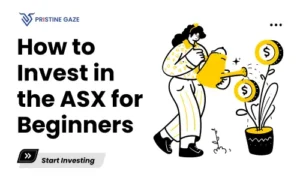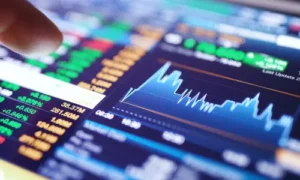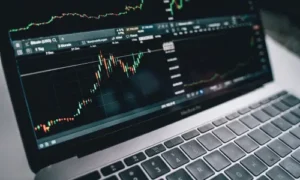The ASX is Crashing: What Should You Do?

Key Takeaways:
- The introduction of tariffs ranging from 10% to 49% on US exports has triggered a sharp global market selloff.
- The S&P 500 and Nasdaq recorded their worst one-day drops since the 2020 COVID-19 crash.
- Recession fears have surged, with analysts from AMP and HSBC estimating a 40% probability, while betting markets peg the risk even higher at 49%.
- The ASX 200 has historically shown resilience during downturns but remains vulnerable to global economic shocks.
- Although Australia’s direct tariff impact is limited, slower global growth—especially in China—poses a more significant threat.
Market Selloff and Rising Recession Risks
Global markets are reeling after the announcement of steep tariffs on exports to the US, aimed at addressing trade imbalances. As a result, both the S&P 500 and Nasdaq plunged 4.84% and 5.97%, respectively, marking their most significant losses since the COVID-19 market crash in 2020. The tariffs have sparked fears of economic retaliation from major trading partners like China, the European Union, and Canada, escalating market volatility.
Economists and analysts have adjusted their recession probabilities accordingly:
- Shane Oliver, Chief Economist at AMP, now estimates a 40% chance of a US recession and warns that global growth could slow from 3% to 2%, depending on potential stimulus measures.
- HSBC analysts also foresee a 40% probability of recession but note that some downside risks may already be factored into current market prices.
- Betting platform Polymarket shows a spike in recession odds, climbing to 49% as of April 3rd, up from 23% in early March.
With recession concerns mounting, how will the S&P/ASX 200 hold up against this economic turbulence?
Australia’s Economic Resilience in Past Crises
Australia has a long track record of dodging recessions, largely thanks to its commodity exports and government stimulus policies. Despite experiencing brief downturns, the ASX 200 has historically rebounded. Here’s how past economic crises impacted the market:
- 1997 Asian Financial Crisis: Volatility spiked, but the ASX 200 quickly recovered, supported by a strong domestic economy.
- 2001 Dot-Com Crash: The US recession led to a 15% dip in the ASX 200, but losses were largely recovered by year-end.
- 2008-09 Global Financial Crisis (GFC): This crisis caused a significant downturn, with the ASX 200 losing over 50% of its value before rebounding within a year.
- 2020 COVID-19 Pandemic: Australia saw its first technical recession in nearly three decades, but swift stimulus measures helped drive a recovery.
ASX 200 Performance Post-Crashes
While downturns have resulted in short-term losses, historical data suggests the ASX 200 tends to recover within one to two years. However, the severity of the current market turbulence will depend on how policymakers respond and whether global economic conditions deteriorate further.
The Impact of Tariffs on the Australian Economy
Although Australia faces a 10% tariff on its exports to the US, the direct economic impact is expected to be moderate. The US accounts for only 5% of Australia’s total exports, equating to around 1% of GDP. However, the real concern lies in slowing global demand, particularly from China and other Asian markets.
Shane Oliver cautions that “the biggest threat is not the tariff itself, but rather the slowdown in global trade and growth, which could weigh heavily on Australia’s export-dependent industries.”
Karen Jorritsma of RBC Capital Markets adds, “Trade protectionism is rising, and for a medium-sized economy like Australia, the shift in global trade rules creates long-term uncertainty.”
What Should Investors Do?
While market downturns create anxiety, they also present long-term investment opportunities. Here are some strategies to consider:
- Stay Invested but Diversify: Market corrections are normal, and history shows that long-term investors who stay the course tend to benefit. Consider diversifying your portfolio to include defensive sectors such as healthcare, utilities, and gold stocks.
- Look for Value in Quality Stocks: Some blue-chip ASX stocks may be trading at discounted prices, presenting potential buying opportunities. Look for strong fundamentals, low debt, and consistent dividends.
- Keep an Eye on Global Policy Responses: Governments may introduce stimulus measures or interest rate cuts to counteract economic slowdowns. These can significantly impact market sentiment and asset prices.
- Maintain a Cash Reserve: Having liquidity allows you to take advantage of opportunities if stock prices decline further. A dollar-cost averaging strategy can also help navigate market volatility.
The Bottom Line
While the ASX 200 has a history of resilience, global uncertainties—including retaliatory tariffs and a potential recession—could keep volatility high in the near term. If global economic damage is contained, markets may stabilize with only a moderate decline. However, if the world is heading toward a deep recession, further downside could be expected.
For now, the only certainty is volatility. Investors should remain patient, focus on fundamentals, and take advantage of opportunities where they arise.
Disclaimer:
Pristine Gaze Pty Ltd trading as Pristine Gaze (ABN 66 680 815 678) and (ACN 680 815 678) is a Corporate Authorised Representative (CAR No. 001312049) of Alpha Securities Pty Ltd (AFSL 330757). The information provided is general information only. Any advice is general advice only. No consideration has been given or will be given to individual objectives, financial situation, or specific needs of any particular person or organisation. The decision to engage our services and the method selected is a personal decision and involves inherent risks, and you must undertake your own investigations and obtain independent advice regarding suitability for your circumstances. Past performance, examples, or projections are not indicative of future results. While we strive to provide accurate information, we make no guarantees regarding the accuracy or completeness of our materials. The website may also contain links to third-party websites or resources, for which Pristine Gaze is not responsible. All content and intellectual property on the Pristine Gaze website, including but not limited to text, graphics, logos, and images, are the property of Pristine Gaze and are protected by applicable copyright and trademark laws. By accessing or using the Pristine Gaze website, you acknowledge and agree to the terms of this disclaimer. Please read our Terms and Conditions, Privacy Policy and Financial Service Guide for further information. Please read our Terms and Conditions, Privacy Policy and Financial Service Guide for further information.









